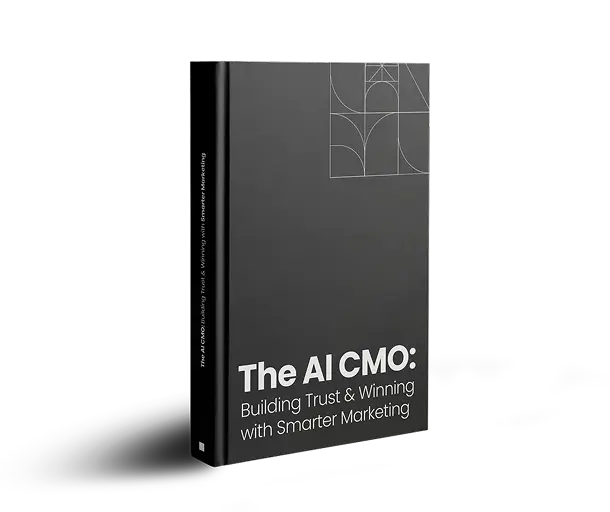
In a world where more than half of B2B buyers make purchase decisions based on the content they consume, B2B marketers must weigh between podcast vs webinar marketing options. Both tools are powerful for positioning your company as a thought leader in your industry.
Thought leadership allows companies to demonstrate their expertise and industry knowledge. By doing so, build credibility in the eyes of buyers who seek their solutions and attract high-quality leads. With thought leadership content influencing the way 75% of B2B buyers select suppliers, podcasts, and webinars can add significant value to your marketing strategy.
In this article, we explore these tools and show you which one is ideal for B2B engagement. But before we do that, here’s a quick definition of each.
What are Podcasts?
These are audio and video files that marketers make accessible online for their target audience to view, stream via a listening application, or download to their devices. Podcasting companies can organize podcasts in one or multiple series, each with several episodes.
What are Webinars?
These are virtual seminars where one or more speakers share information over the Internet. They are live online events that attract large audiences from different parts of the world. Attendees are required to register for webinars and actively participate in the event through questions or polls.
Podcast vs Webinar: What are the Main Differences?
As B2B marketing tools, podcasts, and webinars are accessible via the internet. However several differences exist between the two. Below is a podcast vs webinar comparison:
1. Content Format and Delivery
Podcasts feature pre-recorded messages designed to inform and entertain the target audience. Unlike webinars that utilize a wide range of content formats including video, graphics, images, and animations, podcasts are available in video and audio formats. In webinars, content is delivered to a live audience, in real-time while for podcasts, there is no live audience.
2. Audience Reach
Podcasts have a wider reach than webinars. They are great for reaching new audiences and creating brand awareness. Webinars, on the other hand, work well in reaching smaller audiences. You can use them to engage potential buyers and turn them into customers.
3. Accessibility of Content
Another difference lies in accessibility of content. Since podcasts are pre-recorded and uploaded online, they’re accessible to larger audiences than webinars. The latter can be filmed and distributed after the event. However, access is limited to attendees only. Podcasts offer listeners the flexibility and convenience to access content at their own pace and on multiple devices including tablets, smartphones, desktop computers, and laptops.
You can easily access insightful podcasts on UnbounB2B’s podcast page, your go-to hub for industry trends. Here is our take on navigating the changing economic landscape with B2B survival insights.
4. Content Strategy
Both B2B webinars and podcasts require a content strategy to guide their development and distribution. However, podcasts adopt a more rigorous content strategy compared to webinars. Since podcasts are used to distribute huge amounts of content and target wide audiences, episodes must be released regularly to keep the audience engaged.
5. Lead Generation and Conversion
Compared to B2B podcasts, webinars are more effective at generating high-quality leads, nurturing them, and converting them. Attendees are often required to register for webinars in advance. This allows companies to collect important contact details to facilitate follow-up with leads. Like webinars, podcasts can be used to distribute content that showcases brand authority and expertise to attract leads. However, podcasts are less targeted, which makes it challenging to generate high-quality leads. Since they focus on a wide audience, podcasts are more effective at creating brand awareness than generating and converting high-quality leads.
6. Long Term Value
Both podcasts and webinars offer businesses long-term value. However, they do this in different ways. Podcasts remain accessible to listeners indefinitely. This means they continue generating leads, engaging your target audience, and creating brand awareness long after their release. On the other hand, webinars convert potential buyers into paying clients. This allows companies to earn sales revenue for as long as they retain those clients.
Struggling with generating leads through webinar? UnboundB2B’s Webinar Registration Solution is your answer to turn leads into loyal clients effortlessly!!

7. Resource Investment
Webinars and podcasts are cost-effective ways of reaching large audiences. You only need to invest in the right Marketing technology that includes recording software, a microphone, video camera, and a theme or topic to start producing a podcast. To host a webinar, you need to invest in a reliable internet connection, a good computer, a webcam, and video conferencing software.
Podcast vs Webinar: Which One Offers Live Engagement and Real-Time Feedback?
When it comes to evaluating B2B engagement channels and getting audience feedback in real-time, webinars carry the day. Their live, interactive nature allows attendees to engage speakers or organizers in real-time. You can use webinars to deepen your connection with attendees as they ask questions, give inputs, and get feedback and insights on specific topics. Webinars are ideal for distributing information like educational content, and product or service demonstrations your audience needs to engage with online.
Podcasts offer your audience the convenience of accessing audio or video content at their pace and time. They are highly effective in delivering content due to the flexible access they offer users. Use podcasts to connect with your target audience and increase brand awareness. Podcasts are also effective in delivering thought leadership content through interviews and other content formats that don’t require high interaction or live audience engagement.
At the end of the day, the decision to use podcasts or webinars depends on the audience you’re targeting and the marketing goals you want to achieve.
Final Thoughts
When you think about podcast vs webinar, you must consider how well they engage your target audience. While both provide B2B markets with a platform to establish thought leadership, they engage audiences differently. Podcasts allow you to disseminate huge amounts of content to a wide audience in a less focused way. However, listeners cannot engage with speakers directly or in real-time because podcasts are pre-recorded. Webinars involve hosting live digital events that focus on small audiences. If you’re looking for a marketing tool that engages your target audience real-time through questions and polls, consider hosting webinars.
FAQs
1. Is a webcast the same as a podcast?
No, Webcasting involves the use of visuals and audio, while podcasts only use audio. Webcasting involves live streaming content while podcasting involves distributing content by placing recorded media files on the internet.
2. How can I turn a webinar into a podcast?
There are two ways to extract an audio track from the webinar and upload the file as a podcast or record the audio afresh to improve audience engagement. Although the first option is quick, speakers may refer to presentations that are not available because visuals are removed. The second option takes time to complete but produces a quality podcast.
3. Why do companies host free webinars?
Free webinars help businesses reach a wider audience, increase brand awareness, generate leads, and build relationships with potential buyers. B2B marketers use them to nurture prospects down the sales funnel.
Our blog
Latest blog posts
Tool and strategies modern teams need to help their companies grow.

Our definition of marketing success in B2B is evolving. For years, traditional metric...

Video has emerged as one of the most effective tools to cut through the noise and con...

The way B2B buyers research, engage, and decide has changed and so must the way marke...







